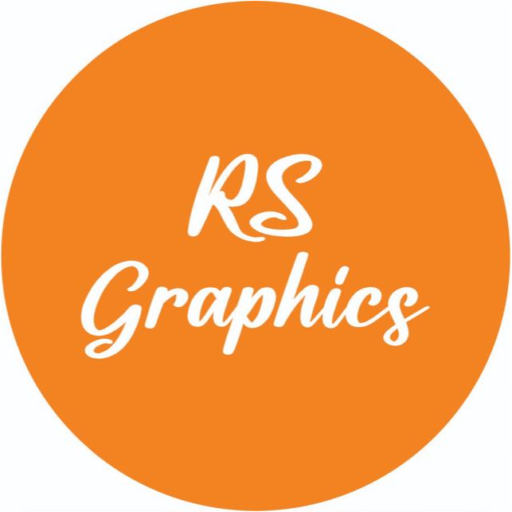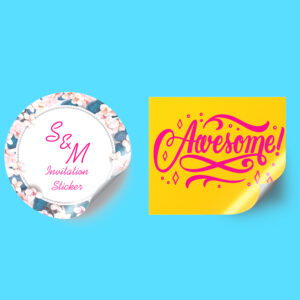White Custom Shape Sticker
- Easy And Convenient Way To Print Your Tags.
- The Best Quality Tags Will Be Given. At Your Doorstep.
- High Quality Multicolor Printing.
- The Tags Will Be Printed On 300 Gsm Paper.
- There Are 6 Different Sizes To Choose From.
- Also Available In Circle Shape.
- Strings And Threads Are Not Included.
- If You Have Any Questions, Please Call After You Place Your Order.
Description
Tags :
Hang tags are a great method to promote your company. Tags are affordable and easy to design. Hang tags are mostly used to identify clothing, provide gifts, or create distinctive retail packaging.
Paper clothes hang tags are a major factor in retail sales, especially when a product line needs to project a specific image or promote a specific offer. The hang tag’s design affects its efficacy. Your goal is to quickly attract people’s attention, get your point out, and present yourself. Your hang tags at retail locations should make it very obvious what your customers can expect from your product, such as a trendy lifestyle, premium materials, a sizable discount, etc.
Online tools let you create your own tags and customise them with a logo, brand name, tagline, contact information, or product description. They are ideal for labelling clothing or things from your shop. They can be labelled with different size indications and price stickers to go with them.
There are two types of tags: the standard type and the classical kind. You can select based on the shape and size that you need.
It comes in standard 300 GSm, non-tearable, textured, and eco-friendly paper (Khaki).
Lamination:
Lamination is a thin, transparent layer that is applied to the entire card.Laminated brochure have a coating that allows them to pop out.
Gloss lamination, matte lamination, and no lamination are three different types of finishing options for printed materials, such as brochures, business cards, and posters.
- Gloss lamination: Gloss lamination is a finishing process that adds a glossy film to the surface of the printed material, creating a shiny and professional look. It also provides a layer of protection against scratches, fingerprints, and other types of damage. However, it can make the printed material harder to read in certain lighting conditions.
- Matte lamination: Matte lamination is similar to gloss lamination, but instead of a glossy film, a matte film is applied to the surface of the printed material. This gives the printed material a smooth, non-reflective finish that is easy to read in any lighting conditions. Matte lamination also provides a layer of protection against scratches, fingerprints, and other types of damage.
- No lamination: If no lamination is applied, the printed materials will be more fragile and can get damaged easily. It will not have a protective layer and will not be resistant to scratches, fingerprints, and other types of damage. It will also be more susceptible to fading, especially when exposed to light for long periods of time.
GSM:
Paper is measured in grammes per square metre (GSM). The higher the GSM, the heavier and thicker the paper. There are varying weights of GSM paper, meaning you can find the right one for a number of different applications.
Choosing GSM paper thickness:
It’s easier to understand what different paper thicknesses might feel like if you start with an awareness of the thickness of a standard piece of paper. For example, typical office paper used in a copier or printer would be around 80 gsm.
300-400 GSM;
These heavier-weight boards are ideal for providing a superb finish to premium, high-quality printed business cards, postcards, leaflets, presentation folders, and wedding stationery. This excellent quality stock is impressively thick, standing up under its own weight, and it will certainly deliver an impact. If it’s a superior finish that you’re looking for, then a 300-400 gsm paper weight will prove a good choice.
How to Select a Design:
- Size: Make sure to choose a template that is the right size for your tags. Consider the size of the tag and the size of the text and images that you want to include.
- Purpose: Determine the purpose of the tag, whether it is for branding, pricing, identification, or another purpose. This will help you choose a template that is appropriate for your needs.
- Material: Consider the material the tag will be printed on and choose a template that is compatible with that material.
- Branding: You may want to make sure the template you choose aligns with your brand. This can include colors, fonts and general aesthetic.
- Design: Look for a template that has a design that matches the look and feel of your brand or product.
Tips For Design:
- Keep it simple: Avoid using too many colors, fonts, or images on your tag. Instead, opt for a clean and simple design that is easy to read and understand.
- Use high-quality images: If you do use images on your tag, make sure they are of high quality and resolution. This will ensure that your tags look professional and sharp.
- Use legible font: Choose a font that is easy to read and that contrasts well with the background color of your tag.
- Make sure the text is large enough: Make sure that the text on your tag is large enough to be easily read from a distance.
- Choose the right material: Consider the environment where the tag will be used and choose a material that is suitable for that environment.
- Add your logo: Make sure to include your company logo on your tag as it helps to establish your brand.
- Include important information: Include important information such as your logo, contact information, and any necessary product or brand information.
- Consider adding QR code or barcode: If you plan on using the tags for inventory or tracking purposes, consider including a barcode or QR code on the tag.





Reviews
There are no reviews yet.